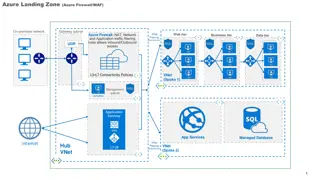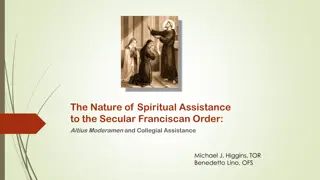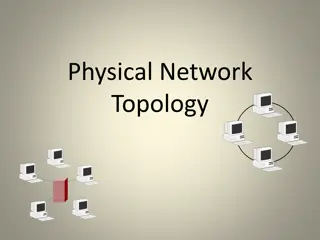Understanding the Tor Network: An In-Depth Overview
The Tor Network, developed in the mid-1990s, is a volunteer-based network that prioritizes privacy and security for Internet users through encryption and random pathways. By utilizing Onion Routing, Tor preserves anonymity but has limitations such as lack of application-level security and plugin usage. Despite weaknesses, Tor offers enhanced security compared to regular browsing. Explore its functioning, encryption mechanisms, and challenges for a comprehensive understanding.
Download Presentation

Please find below an Image/Link to download the presentation.
The content on the website is provided AS IS for your information and personal use only. It may not be sold, licensed, or shared on other websites without obtaining consent from the author. Download presentation by click this link. If you encounter any issues during the download, it is possible that the publisher has removed the file from their server.
E N D
Presentation Transcript
The Tor Network BY: CONOR DOHERTY AND KENNETH CABRERA
Project Topics What is the Tor Network? How does Tor function? How does Tor work to preserve anonymity? What are the limits and weaknesses of Tor? How much more secure is Tor than normal internet browsing?
What is the Tor Network? The Onion Router A distributed volunteer-based network which uses random pathways and encryption to prevent traffic analysis. The Tor network is a group of volunteer-operated servers that allows people to improve their privacy and security on the Internet. The Tor Project Website
What is the Tor Network? Developed in the mid 1990 s by US Naval Research employees. Remember the reading: Hiding Routing Information by David M. Goldschlag, Michael G. Reed, and Paul F. Syverson Outlines the idea of Onion Routing to prevent traffic analysis http://www.freehaven.net/anonbib/cache/onion-routing:ih96.pdf
The Onion The encrypted message is called an Onion because of the layers of encryption it has The message (the core) has padding Encrypted for each pathway along the circuit Each part of the path peels of a layer until the message reaches the receiver (i.e. no more layers left)
How does Tor preserve Anonymity? Keys Encryption Authentication Coordination Entry Guards Circuit Change
Limitations of Tor No application-level security Can t use plugins (Flash, Java, etc.) No protection outside of the Tor Network Egotistical girraffe Prevents traffic analysis but not traffic confirmation
Tor v. Normal Browsing Tor v. SSL/TLS (Secure Socket Layer/Transport Layer Security) Censorship-circumvention Browsers of Tor can access hidden or exclusive services Can be exploited Silk Road, Arms Dealers, etc.
Conclusions Most normal users don t need Tor Can be a useful tool for preserving anonymity online Some limitations Much better than normal browsing
Sources https://www.torproject.org/about/overview.html.en https://www.torproject.org/getinvolved/volunteer.html.en https://www.torproject.org/docs/faq.html.en#FacingLegalTrouble https://blog.torproject.org/category/tags/traffic-confirmation https://hal.inria.fr/file/index/docid/471556/filename/TorBT.pdf http://www.theguardian.com/world/2013/oct/04/tor-attacks-nsa-users-online- anonymity https://archive.org/stream/ACLU_-_egotistical-giraffe/ACLU_-_egotistical- giraffe_djvu.txt http://www.theguardian.com/world/interactive/2013/oct/04/egotistical-giraffe-nsa- tor-document https://developer.mozilla.org/en-US/docs/Archive/Web/E4X http://www.freehaven.net/anonbib/cache/onion-routing:ih96.pdf https://www.eff.org/torchallenge/what-is-tor.html http://www.tomsguide.com/us/what-is-tor-faq,news-17754.html

















































